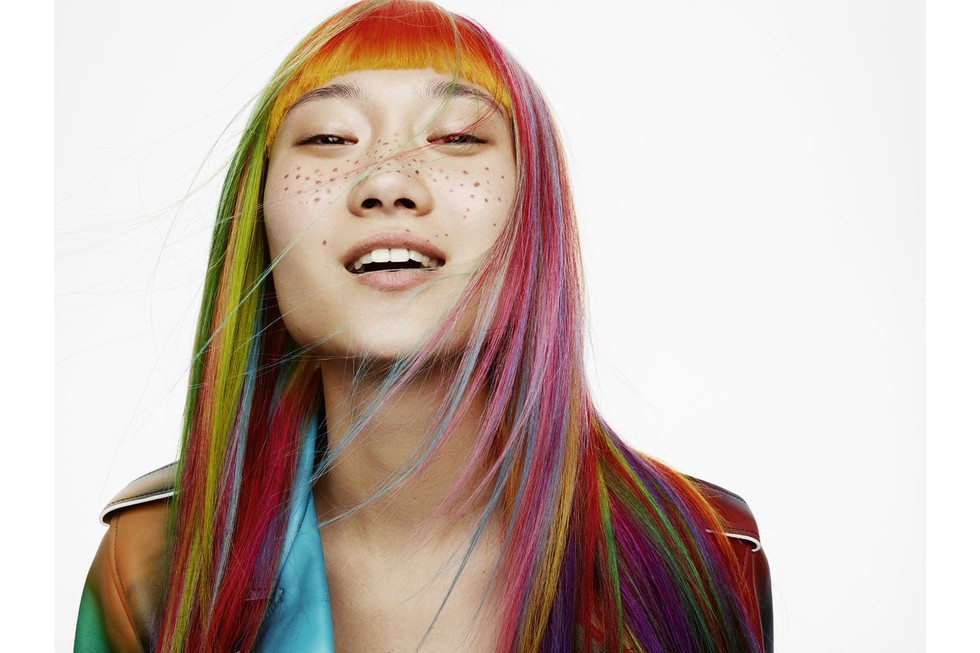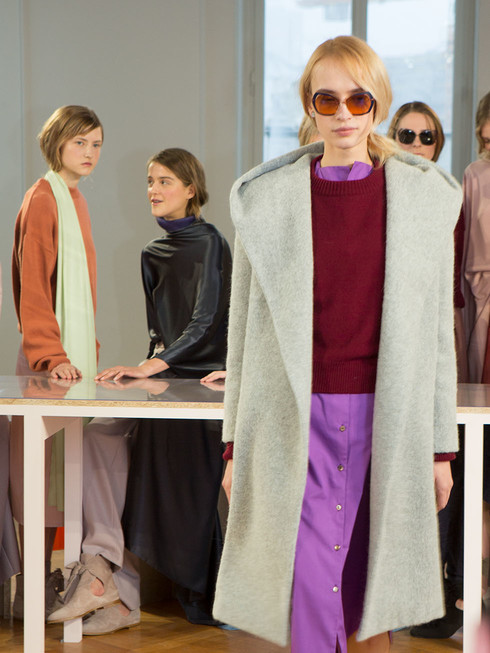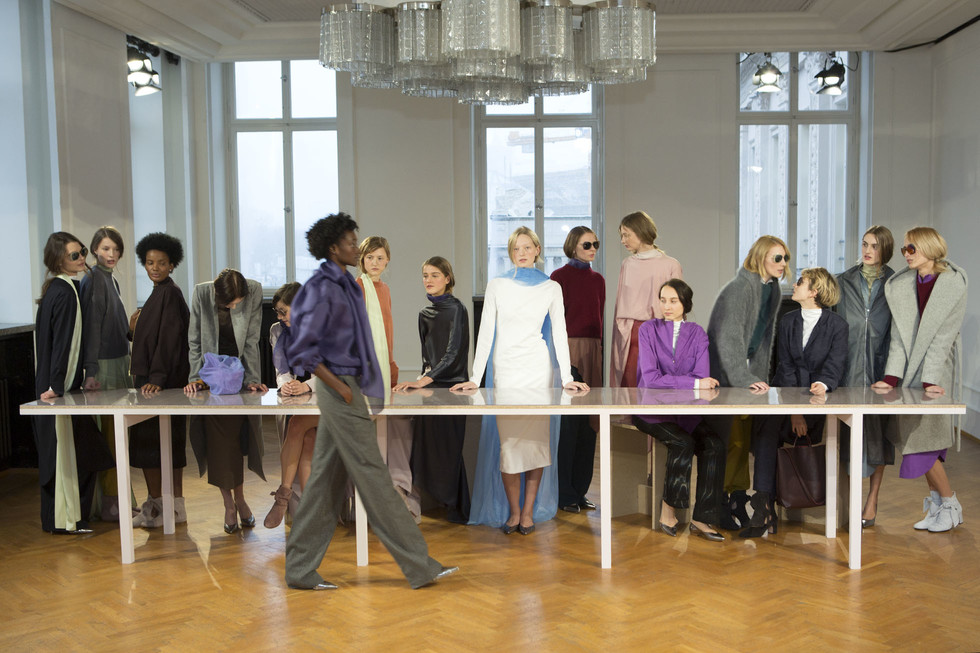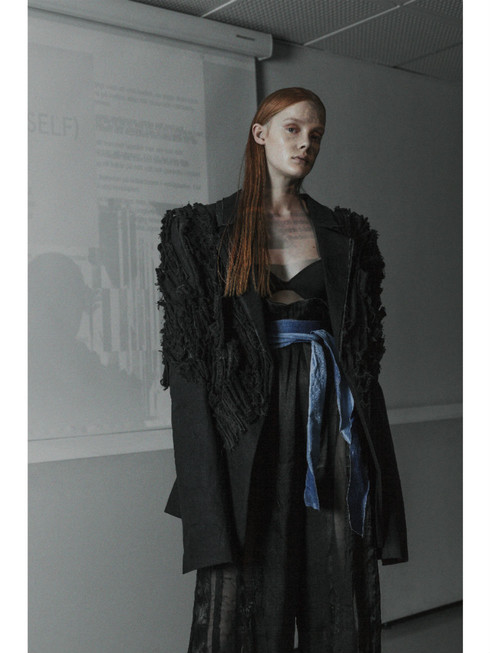VICKY LAWTON: 360 APPROACH WITH ACTION, ENERGY AND EXPERIMENTING
Written by Ksenia RundinBehind every fashion and music video or any TV commercial there is always a significant extent of creativity. Vicky Lawton is a ‘visual fanatic’, who has directed a number of those boldly intriguing photo and video stories for such brands as Chanel, Elie Saab, Jil Sander and a few others. Belonging to a new wave of female directors, Vicky was already prestigiously nominated for Best New Director at the 2015 Shots Awards and also won a Silver at the 2016 Young Director Award in Cannes. However, the award list is long and Vicky was also praised with the Creative Circle award for Best Up and Coming Female Commercial Film Director 2017 and appeared on the cover of Pitch Magazine's 'Winners' Issue. Thus, she is one of the ‘architects’ of the magnificent and faceted world, consisting of directors, photographers, strategists, producers and editors, which is known to us under the name FASHION. Odalisque Magazine together with Vicky Lawton has made an attempt to give our readers a peak into that magnificent and demanding reality of Vicky’s professional life.
Please tell us about your recent film project and your next exciting project in photography.
Recently I shot an Agent Provocateur campaign - film and stills, which was a really amazing experience working with Creative Director Sarah Shotton and featuring the incredible Eliza Cummings. A first person perspective film which delved into little moments between Eliza and her lover - some quite adventurous, some very naughty.
Now I am working on a personal project at the moment called ‘Self Love’ which is an exploration into learning to accept and love yourself and the skin you are in. It is both stills and film and the casting is all about inclusivity - collaborating with those in the fashion industry as well as friends, family and a call out to anyone who wants to be involved.
What came first, passion for film or love for photography?
Tricky question… I fell in love with cinema first, music videos and then I became obsessed with fashion magazines: Vogue, Elle, The Face. I would rip out the pages and tape them up on my walls like wallpaper.
What fashion brand (you have not worked with) would you love to work with in photography and/or in film and why?
I would love to work on projects that I can really sink my teeth in from start to finish - collaborate creatively, create the photography campaign alongside the TV Commercial. To bring a new 360 approach to everything. I LOVE action, energy and experimenting with different camera rigs. Working with brands who are on the same wavelength would be incredible.
Which male politician and female politician would you like to photograph? How could we expect to see them portrayed in your photographs? (I mean if you would like to create a certain image for the person or put him/her in a special environment)?
I would love to photograph women who are actually making a difference. Women who are starting conversations, standing up to put important message out there and putting actions in place to encourage the next wave. When I get the chance to work with Reese Witherspoon, Emma Watson, Katherine Bigelow, Patty Jenkins, Reed Morano I’ll make sure they are portrayed as the bad-ass, awesome individuals that they are.
Do you have any female photographer/-s whose works have been a great inspiration for you?
I have always been a big fan of Annie Leibovitz and Ellen von Unwerth. Leibovitz has a portfolio of incredible portraits and really seems to understand her subjects. Ellen von Unwerth has such a distinct style and I really admire how playful her images are.
How does artificial intelligence (AI) affect/improve your work in film and photography? Does it become easier or you have to learn more and adapt yourself to new digital conditions?
Robots are going to become photographers and directors…and then I will be out of a job!
When you create a fashion video, who usually decides what the plot/theme should be, you or the fashion brand?
The creative concept comes from the agency on TV Commercials - but on fashion films I have created through Hunger Magazine, I usually have created the concepts alongside my team at The Full Service.
What media do you think fashion will use in 20 years? Will Instagram survive taking new AI-forms?
I think we will have a new incarnation of Instagram, it will involve into something new - not sure what yet! Film is dominating the platforms, with digital taking precedent over stills in some cases clients are asking for moving image more often.
How do you, working with soft intelligence called creativity, where you constantly judged by audience, defeat you fear or insecurities connected to that?
You cannot be precious about your ideas. They have to be shared, and that is the way they grow! There is always a bit of nervousness when you put out a piece of work, but good or bad feedback it is all a learning curve.
Do you think we ever will be able to see a new sustainable era of fashion, where sustainability is not just merely used as a marketing strategy?
I hope so, I think big companies are realising that it is a necessity to have strong solutions in place to enable better sustainability. There’s no time to waste…no pun intended.






























